Infraorder Brachyura Scientific name Aratus pisonii Rank Species | Higher classification Aratus | |
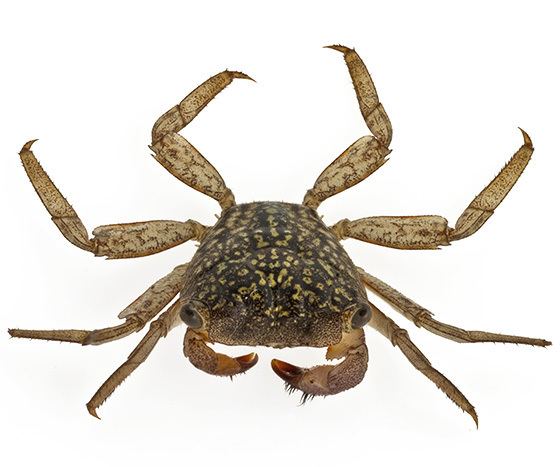 | ||
Similar Crab, Goniopsis cruentata, Crustacean, Ucides, Decapoda | ||
Juey cangrejo ara a o arb reo aratus pisonii mangrove tree crab
Aratus pisonii, commonly known as the mangrove tree crab, is a species of crab which lives in mangrove trees in tropical and subtropical parts of the Americas, from Florida to Brazil on the Atlantic coast, and from Nicaragua to Peru on the Pacific coast. It feeds mostly on the leaves of the mangroves, but is an omnivore, and prefers animal matter when possible. A. pisonii is the only species in the monotypic genus Aratus. The specific epithet pisonii commemorates the Dutch naturalist Willem Piso who travelled in Brazil in 1638 with Georg Marggraf.
Contents
- Juey cangrejo ara a o arb reo aratus pisonii mangrove tree crab
- Aug 16 2015 mangrove tree crabs aratus pisonii squareback marsh crabs armases cinereum
- Description
- Distribution and habitat
- Ecology
- Reproduction
- References
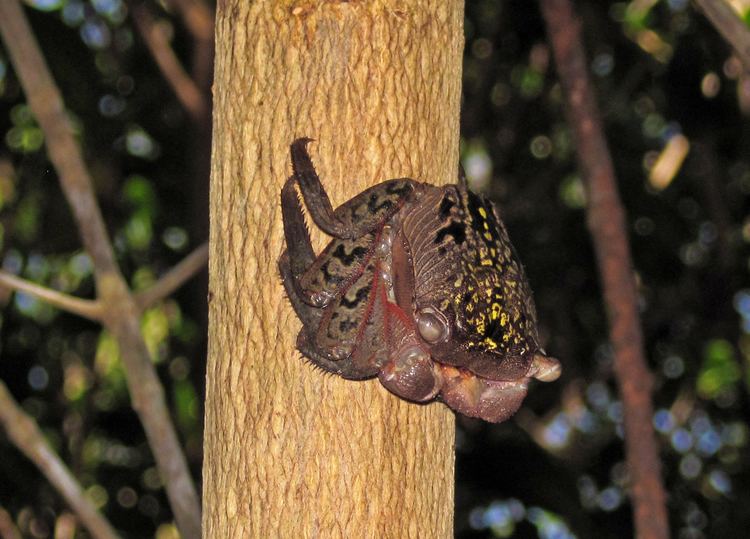
Aug 16 2015 mangrove tree crabs aratus pisonii squareback marsh crabs armases cinereum
Description
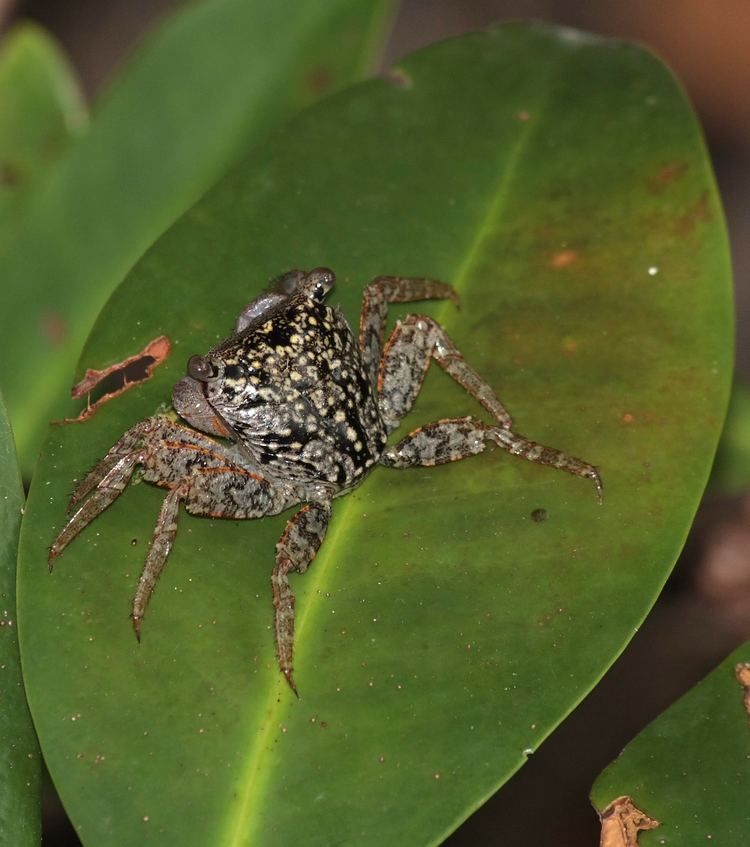
The mangrove tree crab is a small species with males averaging about 2 centimetres (0.79 in) long and females slightly less. The large eyes are set far apart and the carapace is wider at the front than at the back. It is a mottled brown and olive colour which helps the crab to blend in with its surroundings. The legs are either brown or mottled and there are tufts of black hairs near their tips. These are pointed which aids the crab when climbing among the mangrove foliage.
Distribution and habitat
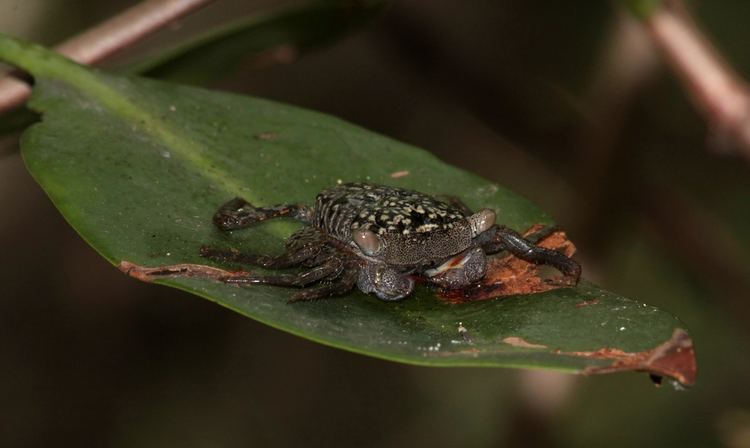
The mangrove tree crab is found in tropical and semitropical regions along the coasts of North, Central and South America. On the Atlantic side its range extends from Florida to northern Brazil, including the whole Caribbean region. On the Pacific side, it occurs from Nicaragua to Peru. It lives primarily on the red mangrove Rhizophora mangle but is also commonly seen on the white mangrove Laguncularia racemosa and the black mangrove Avicennia germinans, ascending the trees when the tide rises and descending to the exposed mud when the tide goes down.
Ecology
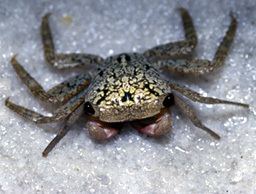
The mangrove tree crab is an omnivore though the greatest part of its diet is the leaves of the mangrove trees on which it lives. It consumes the epidermis of the leaves and characteristic scraping marks show where it has fed. Even where this crab is uncommon, its consumption may constitute over 90% of the herbivory of mangrove leaves. It also eats organic debris and opportunistically feeds on carrion and small invertebrates including polychaete worms, nematodes and foraminiferans. In feeding trials it was found that this crab prefers animal food over plant food. This is unsurprising considering that mangrove leaves are of poor nutritional value, but what is surprising is the high proportion of leaf matter in the crab's diet. It is possible that this is a response to the greater risk of predation in the water than in the canopy.

The mangrove tree crab is preyed on by birds, terrestrial mammals and larger crabs. It is efficient at evading potential predators as it can scuttle along branches at the rate of one metre (yard) per second and can leap to safety in the water below. Here it may become the victim of a predatory fish.
Reproduction
In northern Brazil, breeding takes place over an extended period but peaks in the rainy season. The female mangrove tree crab carries the fertilised eggs under her abdomen until they are ready to hatch. While they are there she moves to the fringes of the mangrove area where conditions are better for the developing embryos and the release of the newly hatched larvae into the sea. The larvae pass through four zoeal stages and one megalopa stage as part of the plankton over the course of a month.
